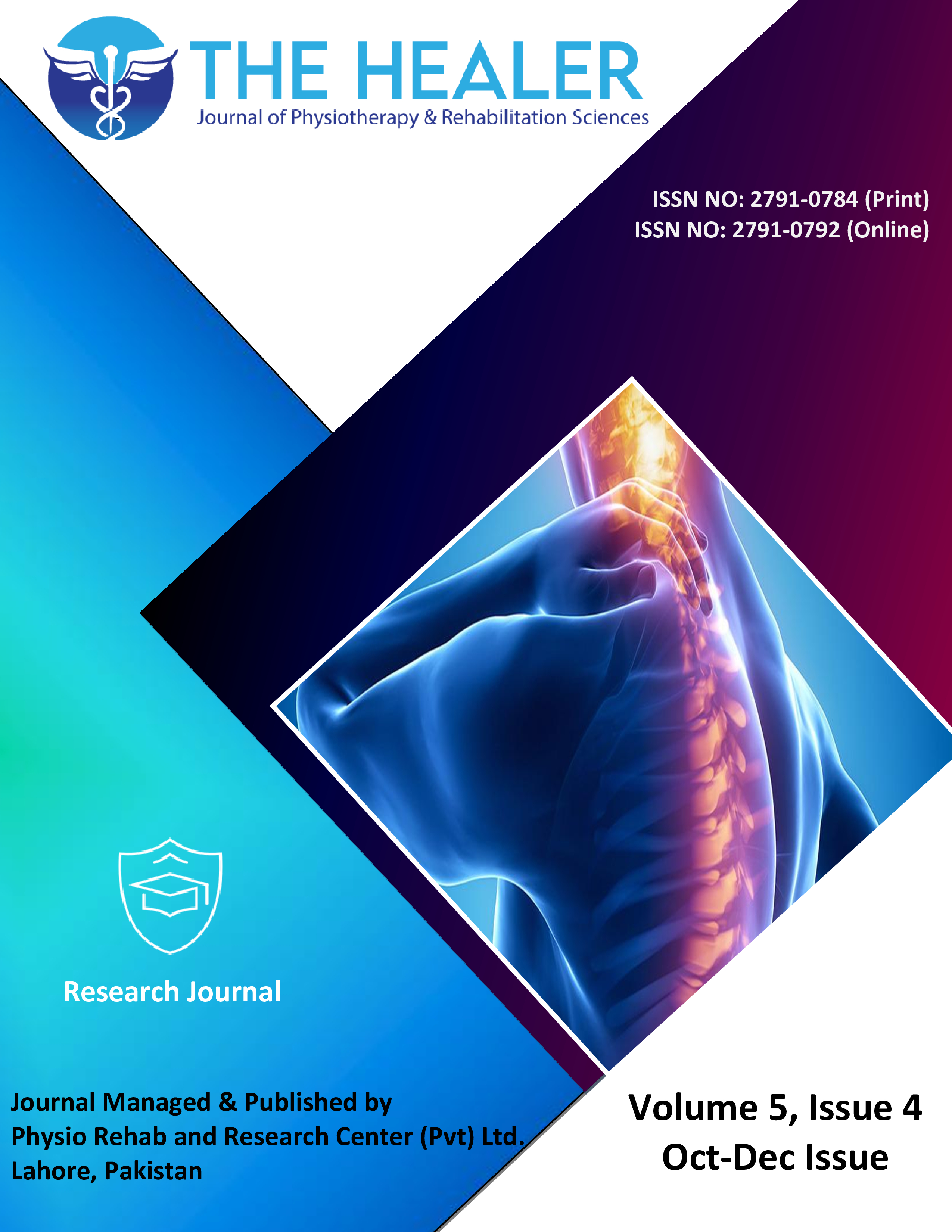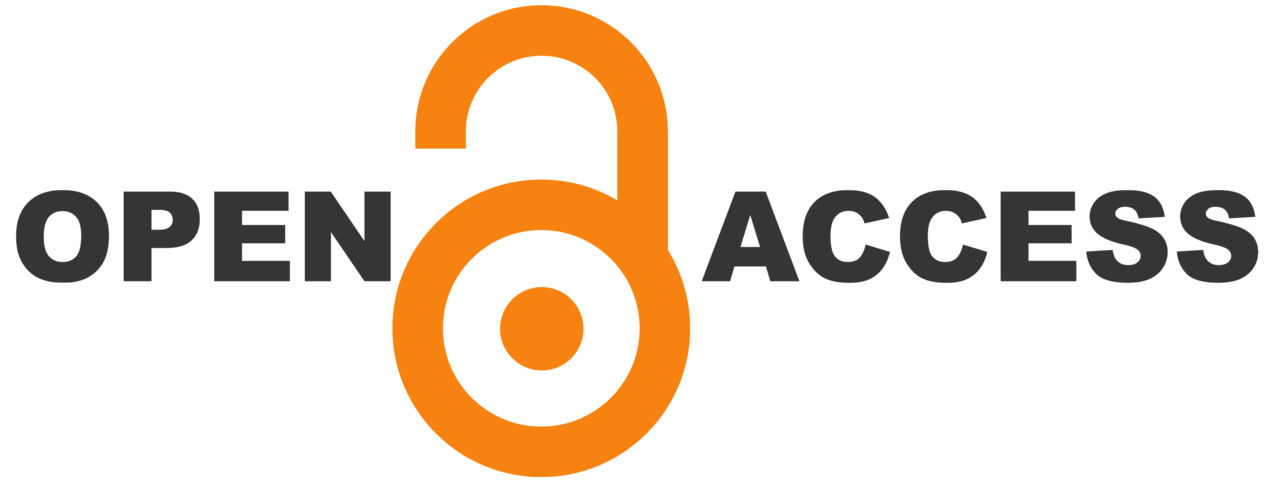Effectiveness of Virtual Reality-Based Telerehabilitation for Stroke Patients in Pakistan: A Randomized Controlled Trial
DOI:
https://doi.org/10.55735/n0ys8906Keywords:
Digital health , Neurorehabilitation , Stroke recovery , Virtual reality , TelerehabilitationAbstract
Background: Stroke is a leading cause of long-term disability in Pakistan, with many patients unable to access timely rehabilitation due to geographical and financial constraints. Conventional rehabilitation, while effective, is often limited to urban centers. Virtual reality-based telerehabilitation offers an innovative solution, providing structured, interactive therapy remotely and improving accessibility for underserved populations. Objective: To evaluate the effectiveness of a virtual reality-based telerehabilitation program in improving motor function, balance, and daily living activities among post-stroke patients in Pakistan. Methodology: A randomized controlled trial was conducted among adults with subacute and chronic stroke. Participants were allocated into two groups: the intervention group received virtual reality-based telerehabilitation through smartphone-compatible headsets with remote therapist monitoring, while the control group underwent conventional physiotherapy. The intervention consisted of 30 to 45-minute sessions, three times a week, for eight weeks. Functional outcomes were measured using the Fugl-Meyer Assessment for upper limb function, Berg Balance Scale, and Barthel Index for daily living activities. Assessments were performed at baseline, post-intervention, and three-month follow-up. Between-group comparisons were made using independent sample t-tests. Within-group changes across the three time points were assessed using repeated measures ANOVA. Results: Preliminary analysis showed that virtual reality-based telerehabilitation produced comparable or superior improvements in upper limb function, balance, and independence in activities of daily living compared to standard therapy. Participants reported higher engagement and satisfaction, with no major adverse events. Conclusion: Virtual reality-based telerehabilitation is an effective and accessible rehabilitation strategy for stroke survivors in Pakistan. By leveraging affordable technology, it can address rehabilitation gaps, reduce hospital burden, and improve patient outcomes, especially in rural and resource-limited settings. Wider implementation and larger-scale studies are recommended to support national rehabilitation programs.
Downloads
References
1. Feigin VL, Norrving B, Mensah GA. Global burden of stroke. Circulation Research. 2017; 120(3): 439-48.
https://doi.org/10.1161/CIRCRESAHA.116.30841
2. Langhorne P, Bernhardt J, Kwakkel G. Stroke rehabilitation. Lancet. 2011; 377(9778):1693-702. https://doi.org/10.1016/S0140-6736(11)60325-5
3. Pollock A, Baer G, Campbell P, et al. Physical rehabilitation approaches for the recovery of function and mobility following stroke. Cochrane Database of Systematic Reviews. 2014; (4): CD001920. https://doi.org/10.1002/14651858.CD001920.pub3
4. Laver KE, Lange B, George S, et al. Virtual reality for stroke rehabilitation. Cochrane Database of Systematic Reviews. 2017; 11(11): CD008349.
https://doi.org/10.1002/14651858.CD008349.pub4
5. Dodakian L, McKenzie AL, Le V, et al. A home-based telerehabilitation program for patients with stroke. Neurorehabilitation and Neural Repair. 2017; 31(10-11): 923-33.
https://doi.org/10.1177/1545968317733818
6. Cramer SC, Dodakian L, Le V, et al. Efficacy of home-based telerehabilitation vs in-clinic therapy for adults after stroke: a randomized clinical trial. JAMA Neurology. 2019; 76(9): 1079-87.
https://doi.org/10.1001/jamaneurol.2019.1604
7. Tchero H, Tabue-Teguo M, Lannuzel A, Rusch E. Telerehabilitation for stroke survivors: systematic review and meta-analysis. Journal of Medical Internet Research. 2018; 20(10): e10867.
8. Chen J, Or CK, Chen T. Effectiveness of using virtual reality-supported exercise therapy for upper extremity motor rehabilitation in patients with stroke: systematic review and meta-analysis of randomized controlled trials. Journal of Medical Internet Research. 2022; 24(6): e24111.
9. Chen J, Sun D, Zhang S, et al. Effects of home-based telerehabilitation on motor function and brain connectivity in subacute stroke patients: a randomized controlled trial. Neurology. 2020; 95(17): e2318-e2330.
https://doi.org/10.1212/WNL.0000000000010821
10. Sarfo FS, Ulasavets U, Opare-Sem OK, Ovbiagele B. Tele-rehabilitation after stroke: an updated systematic review of the literature. Journal of Stroke and Cerebrovascular Diseases. 2018; 27(9): 2306-18.
https://doi.org/10.1016/j.jstrokecerebrovasdis.2018.05.013
11. Ain QU, Khan S, Ilyas S, et al. Additional effects of xbox kinect training on upper limb function in chronic stroke patients: a randomized controlled trial. Healthcare (Basel). 2021; 9(3): 242.
https://doi.org/10.3390/healthcare9030242
12. Sultan N, Raza A, Khan SA. Effects of virtual reality training using xbox kinect on balance, postural control, and functional independence in subjects with stroke. Games for Health Journal. 2023; 12(6): 440-44.
https://doi.org/10.1089/g4h.2022.0193
13. Edwards D, Kumar S, Brinkman L, et al. Telerehabilitation initiated early in post-stroke recovery: a feasibility study. Neurorehabilitation and neural repair. 2023; 37(2-3): 131-41.
https://doi.org/10.1177/15459683231159660
14. Mekbib DB, Debeli DK, Zhang L, et al. A novel fully immersive virtual reality environment for upper extremity rehabilitation in patients with stroke. Annals of the New York Academy of Sciences. 2021; 1493(1): 75-89.
https://doi.org/10.1111/nyas.14554
15. Hiragami S, Inoue Y, Harada K. Minimal clinically important difference for the Fugl-Meyer assessment of the upper extremity in convalescent stroke patients with moderate to severe hemiparesis. Journal of Physical Therapy Science. 2019; 31(11): 917-21.
https://doi.org/10.1589/jpts.31.917
16. Standen PJ, Threapleton K, Richardson A, et al. A low-cost virtual reality system for home-based rehabilitation of the arm following stroke: a randomised controlled feasibility trial. Clinical rehabilitation. 2017; 31(3): 340-50.
https://doi.org/10.1177/0269215516640320
17. Maceira-Elvira P, Popa T, Schmid AC, Hummel FC. Wearable technology in stroke rehabilitation: towards improved diagnosis and treatment of upper-limb motor impairment. Journal of Neuroengineering and Rehabilitation. 2019; 16(1): 142.
https://doi.org/10.1186/s12984-019-0612-y
18. Lin L-F, Lin Y-J, Lin Z-H, et al. Feasibility and efficacy of wearable devices for upper limb rehabilitation in patients with chronic stroke: A randomized controlled pilot study. European Journal of Physical and Rehabilitation Medicine. 2018; 54(3): 388-96.
https://doi.org/10.23736/S1973-9087.17.04691-3
19. Yang J, Zhu Y, Li H, Wang K, Li D, Qi Q. Effect of robotic exoskeleton training on lower limb function, activity and participation in stroke patients: a systematic review and meta-analysis of randomized controlled trials. Frontiers in Neurology. 2024; 15: 1453781.
https://doi.org/10.3389/fneur.2024.1453781
20. Mustile M, Kourtis D, Edwards MG, Donaldson DI, Ietswaart M. Neural correlates of motor imagery and execution in real-world dynamic behavior: evidence for similarities and differences. Frontiers in Human Neuroscience. 2024; 18: 1412307.
https://doi.org/10.3389/fnhum.2024.1412307
21. Khokale R, Mathew GS, Ahmed S, et al. Virtual and augmented reality in post-stroke rehabilitation: a narrative review. Cureus. 2023; 15(4): e37559.
https://doi.org/10.7759/cureus.37559
22. Bernhardt J, Hayward KS, Kwakkel G, et al. Agreed definitions and a shared vision for new standards in stroke recovery research: the stroke recovery and rehabilitation roundtable taskforce. International Journal of Stroke. 2017; 12(5): 444-50.
https://doi.org/10.1177/1747493017711816
23. Khatun F, Heywood AE, Ray PK, et al. Determinants of readiness to adopt mHealth in a rural community of Bangladesh. International Journal of Medical Informatics. 2015; 84(10): 847-56.
https://doi.org/10.1016/j.ijmedinf.2015.06.008
24. Sharmin F, Hossain MF, Bari MU, et al. Effectiveness of task-oriented circuit training on the motor performance of ischaemic stroke patients: a study protocol for randomised clinical trial. BMJ Open Sport & Exercise Medicine. 2025; 11(2): e002604.
https://doi.org/10.1136/bmjsem-2025-002604
25. Hayward KS, Kramer SF, Thijs V, et al. A systematic review protocol of timing, efficacy and cost effectiveness of upper limb therapy for motor recovery post-stroke. Systematic Reviews. 2019; 8(1): 187.
https://doi.org/10.1186/s13643-019-1093-6
26. World Health Organization. Regional strategy for fostering digital health in the Eastern Mediterranean Region (2023-2027). Regional committee for the eastern mediterranean sixty-ninth session provisional agenda item 3(e); 2022. (Available from: https://applications.emro.who.int/docs/Digital-Health-EMR-2023-2027-eng.pdf)
27. Gower V, Aprile I, Falchini F, et al. Cost analysis of technological vs. conventional upper limb rehabilitation for patients with neurological disorders: an Italian real-world data case study. Frontiers in Public Health. 2024; 12: 1445099.

Downloads
Published
License
Copyright (c) 2025 The Healer Journal of Physiotherapy and Rehabilitation Sciences

This work is licensed under a Creative Commons Attribution 4.0 International License.














